Edgar Rice Burroughs’s Mars, Part 8: Swords of Mars
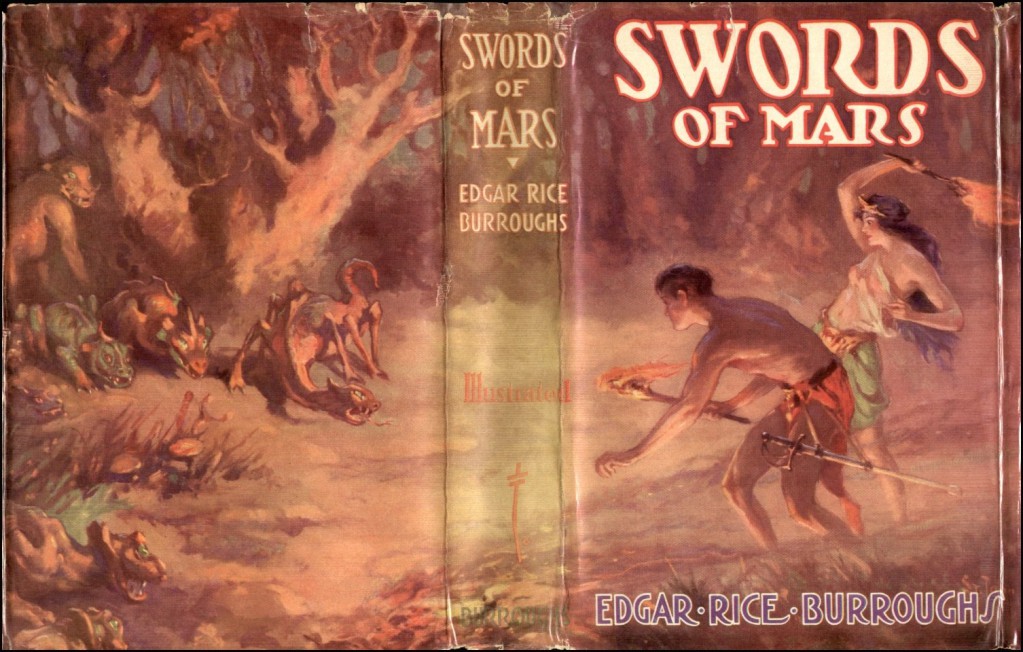 “But my memories of that great tragedy are not all sad. There was high adventure, there was noble fighting; and in the end there was — but perhaps you would like to hear about it.”
“But my memories of that great tragedy are not all sad. There was high adventure, there was noble fighting; and in the end there was — but perhaps you would like to hear about it.”
Guess who’s back? John Carter, who for the twenty years of real time since The Warlord of Mars has only served the role of a cameo character, is once again the hero and narrator of a Martian novel. And for the first time, he goes off-planet — although only as far as one of Mars’ two miniature moons.
Our Saga: The adventures of Earthman John Carter, his progeny, and sundry other natives and visitors, on the planet Mars, known to its inhabitants as Barsoom. A dry and slowly dying world, Barsoom contains four different human civilizations; one non-human one; a scattering of science among swashbuckling; and a plethora of religions, mystery cities, and strange beasts. The series spans 1912 to 1964 with nine novels, one volume of linked novellas, and two unrelated novellas.
Today’s Installment: Swords of Mars (1934–35)
Previous Installments: A Princess of Mars (1912), The Gods of Mars (1913), The Warlord of Mars (1913–14), Thuvia, Maid of Mars (1916), The Chessmen of Mars (1922), The Master Mind of Mars (1927), A Fighting Man of Mars (1930)
The Backstory
Why did Edgar Rice Burroughs return to John Carter as the hero after exploring other protagonists for so long? My guess: the Great Depression. The Tarzan merchandising empire was just taking off with the huge success of the first Johnny Weissmuller film, Tarzan the Ape Man, but Burroughs received only a flat $75,000 payment for the first two films while MGM raked in millions from them. Concurrently, Burroughs’s independent investment adventures outside of writing were failing. Even with the apparent outward success from Tarzan, times looked uncertain. Adding to the stress, Burroughs’s marriage was collapsing and he and his wife Emma were living separately by the end of 1934. ERB made serious efforts to expand his other franchises (this was the time in which he wrote the first two Venus novels, Pirates of Venus and Lost on Venus), and getting back to John Carter must have felt reassuring, mentally and financially. And indeed, the “Return of John Carter” novel Swords of Mars sold immediately. Burroughs wrote the book rapidly during November and December of 1933, and it appeared serially a year later in the top-tier pulp adventure magazine Blue Book. …
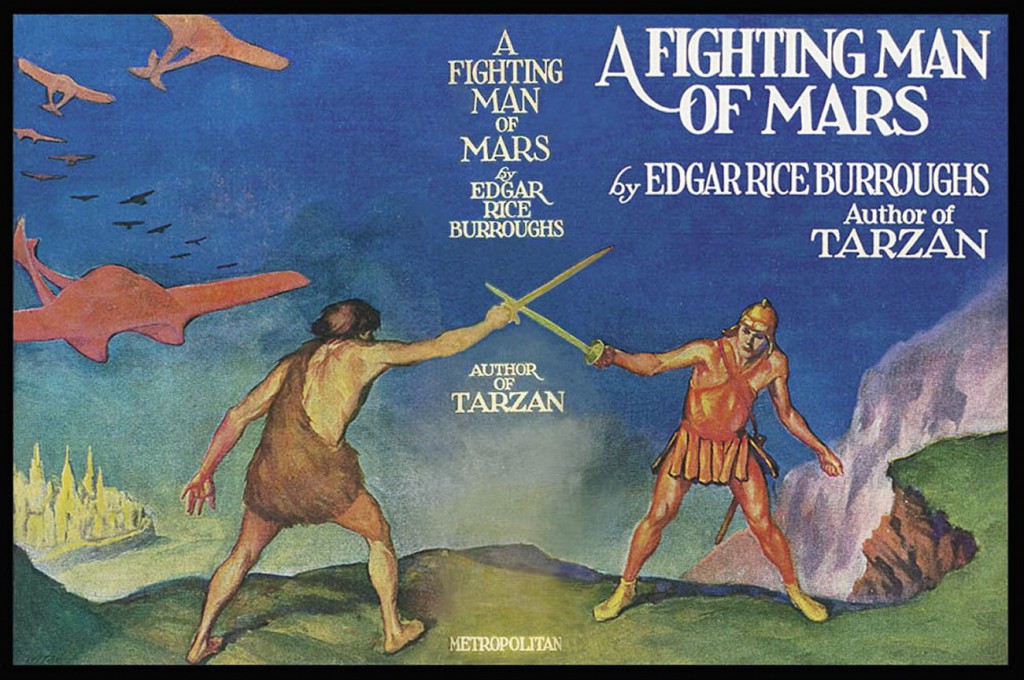 Back on Mars already?
Back on Mars already?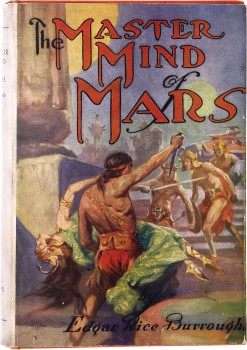 I maxed out on Barsoom back in March. After reviewing the first five Martian novels over a span of two and a half months, I switched over to writing about the movie
I maxed out on Barsoom back in March. After reviewing the first five Martian novels over a span of two and a half months, I switched over to writing about the movie  John Carter (2012)
John Carter (2012)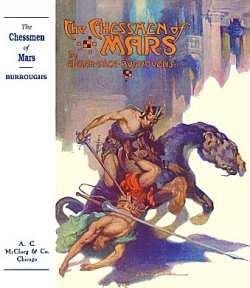 “The squares shall be contested to the death. Just are the laws of Manator! I have spoken.”
“The squares shall be contested to the death. Just are the laws of Manator! I have spoken.”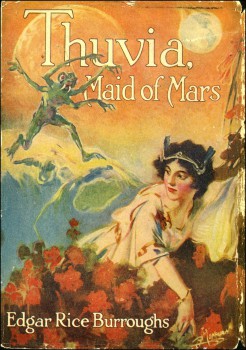 John Carter’s story appeared finished with
John Carter’s story appeared finished with 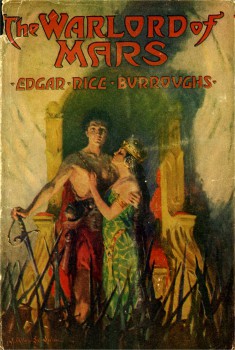 Although there are still eight more books to go in the Mars series, with The Warlord of Mars I can bring to a conclusion Phase #1 of the saga: this completes the “John Carter Trilogy,” and the books that follow it take different paths with new heroes. John Carter will not return to the protagonist role until the eighth book,
Although there are still eight more books to go in the Mars series, with The Warlord of Mars I can bring to a conclusion Phase #1 of the saga: this completes the “John Carter Trilogy,” and the books that follow it take different paths with new heroes. John Carter will not return to the protagonist role until the eighth book, 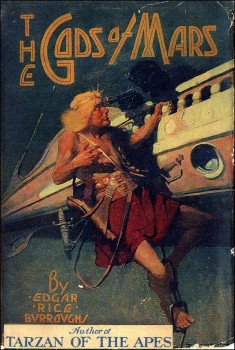 I played a bit rough with A Princess of Mars last week in my
I played a bit rough with A Princess of Mars last week in my 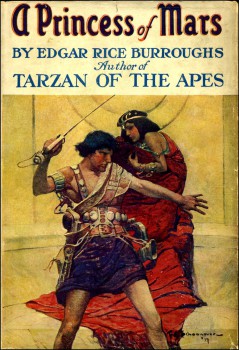 The year 2012 C.E. is the centenary of the Reader Revolution. Two novels published in pulp magazines that year, A Princess of Mars and Tarzan of the Apes, re-shaped popular fiction, helped change the United States into a nation of readers, and created the professional fiction writer. One man wrote both books: Edgar Rice Burroughs.
The year 2012 C.E. is the centenary of the Reader Revolution. Two novels published in pulp magazines that year, A Princess of Mars and Tarzan of the Apes, re-shaped popular fiction, helped change the United States into a nation of readers, and created the professional fiction writer. One man wrote both books: Edgar Rice Burroughs.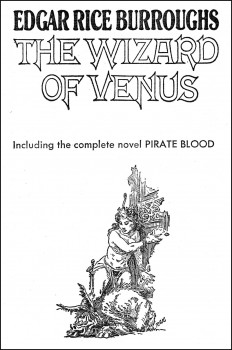 The Venus series ends not with a novel, but a novella. Consequently, this will be the shortest entry in my survey of Burroughs’s last series, but I have appended a wrap-up with my final thoughts on the Venus books as a whole.
The Venus series ends not with a novel, but a novella. Consequently, this will be the shortest entry in my survey of Burroughs’s last series, but I have appended a wrap-up with my final thoughts on the Venus books as a whole.